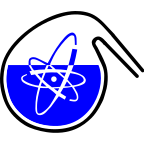Speaker
Description
The post-accident measure demand has raised after Fukushima Daichi accident. One of the main challenges was related to treatment of large volumes of the highly radioactive waste waters, being generated during the severe accident mitigation. Therefore UJV Řež in the cooperation with CEZ, a.s. and Slovenské elektrárne, a.s. has started to review the concept and potential design of radioactive contaminated water treatment device, dedicated to the VVER 440 and 1000 NPP severe accident, followed by experimental programme, studying sorbing properties of selected sorbents for critical radionuclides.
The potential apparatus concept has been developed as an integral part of the implementation of Fukushima Daichi post-accident measures in VVER units. The volume of treated water is expected to be 10 000 m3, presuming that the treatment of the contaminated water would start 6 months after the successful stabilization of the accident progression based on ERO response according to plant-specific SAMGs. The most important contaminants in the coolant solution would be Cs and Sr radioisotopes, altogether with actinides.
The first important step was to determine of the radionuclide source term and the composition of the solution. The apparatus itself might consist of several columns with various sorbent materials, dedicated to the radioisotope to be eliminated. Potential sorbent were identified, including commercial and laboratory sorbents and nanomaterials. Finally a set of 48 materials was selected.
Nowadays, the research has been focused on material sorptive properties in order pre-select the candidates for further research, studying effect of radiation and coolant solution. Sorbing materials include commercial materials, experimental materials (being developed for specific purposes) and nanomaterials.
Sorption experiments with 137Cs and 85Sr were performed in the first round in order to select the most efficient sorbents of the set that would be submitted to further research (influence of post-accident solution, influence of irradiation due to nuclides in the solution etc.)
Acknowledgements: The activities was performed within UJV internal development project under support of SE, a.s. (IROP 14Y0029), ČEZ, a.s. and under funding of Czech Minstry of Trade and Industry (project FV 20214)

